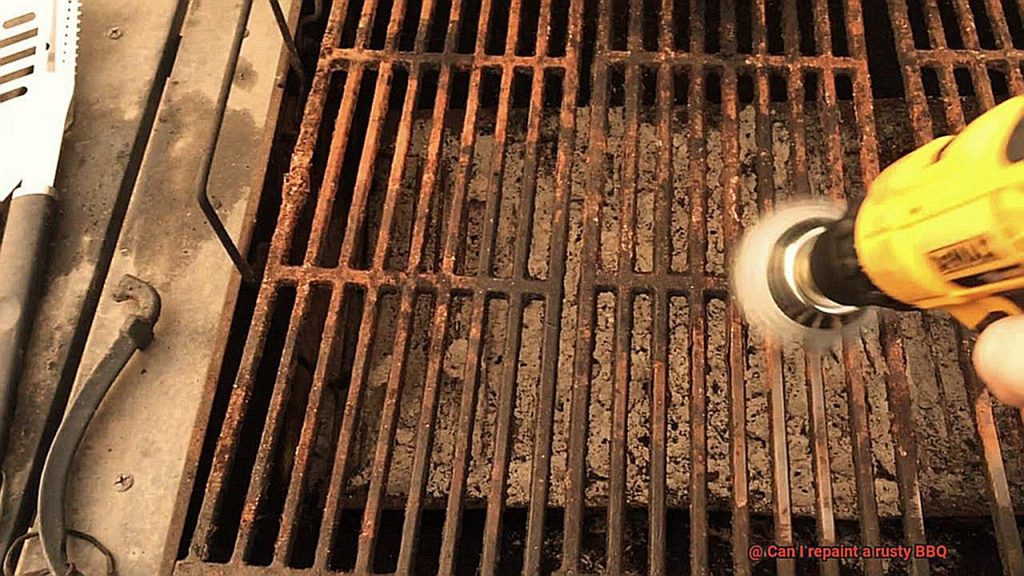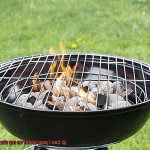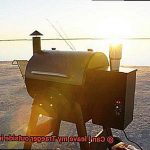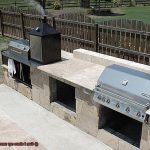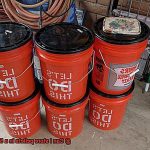Summer is almost here, and that means one thing – it’s BBQ time. But before you start marinating your meats and veggies, take a closer look at your grill. Has it lost its shine and become rusty? Don’t fret. You can still give it a new lease of life by repainting it.
However, before you grab your paintbrush, there are some crucial things to consider. Rust may indicate more severe damage to your BBQ, so inspect it thoroughly before starting any work.
In this blog post, we’ll explore the steps you need to take to repaint your rusty BBQ and make it look brand new again. From assessing the damage to selecting the right type of paint and tools required for the job – we’ve got you covered.
So if you want to impress your guests with a shiny, rust-free grill at your next backyard party, keep reading. We’ll show you how to transform your old BBQ into a work of art that will have everyone drooling over their burgers and hotdogs.
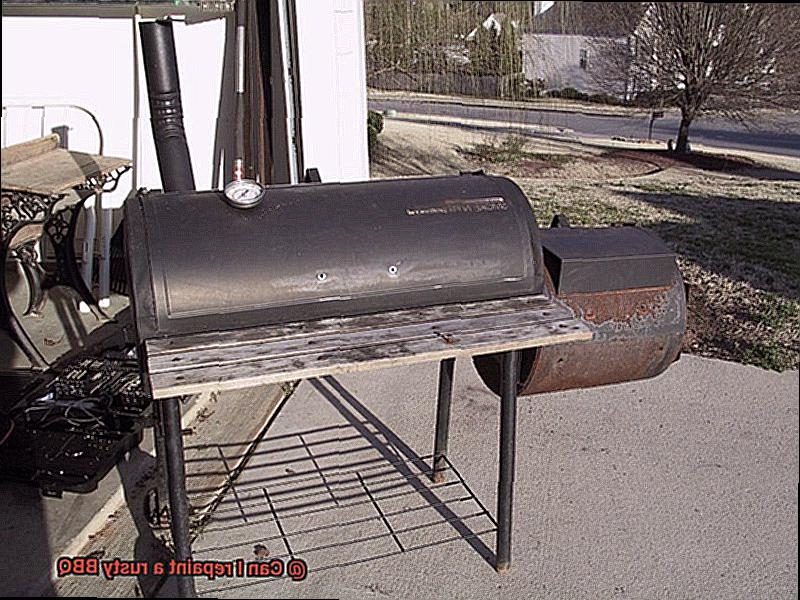
Contents
What Causes Rust on BBQs?
Rust on BBQs is a common problem that can ruin the appearance and performance of your grill. As an expert on BBQ rust, I can tell you that there are several factors that contribute to this issue.
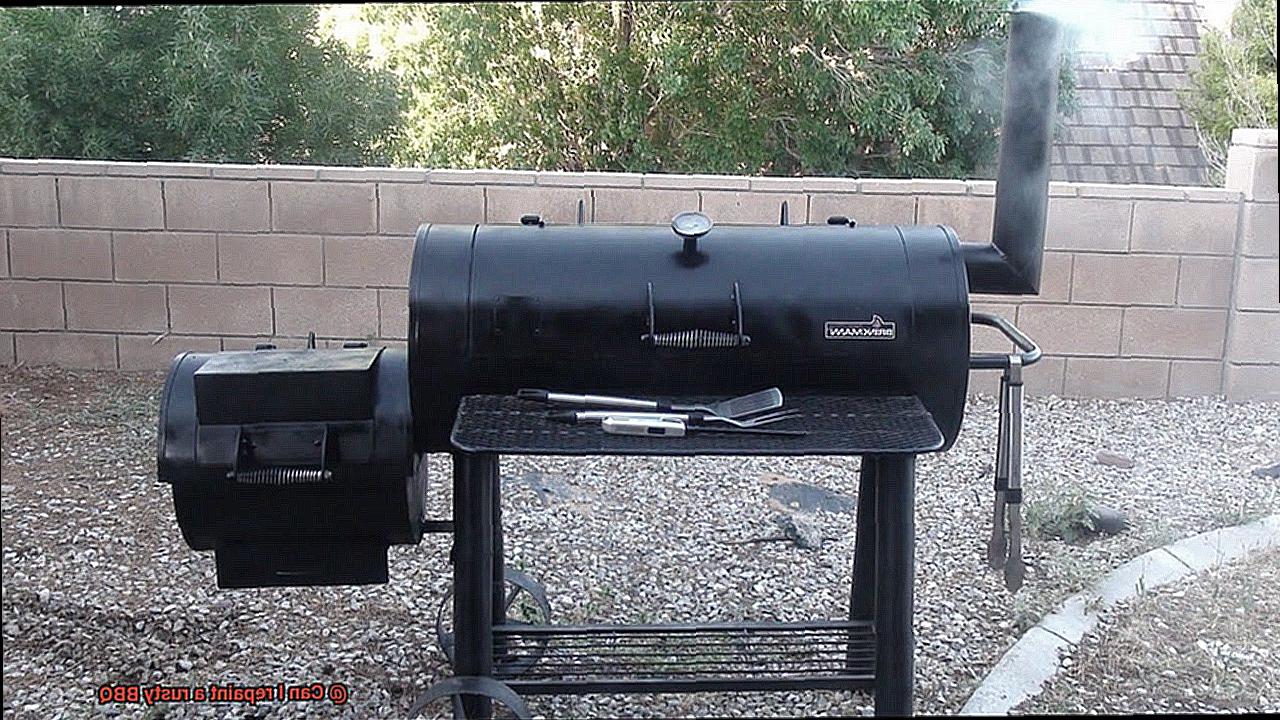
Firstly, exposure to moisture and air is one of the primary causes of rust on BBQs. When metal is exposed to moisture, it reacts with oxygen in the air, leading to the formation of rust. This is why it’s crucial to keep your grill covered when not in use, particularly during rainy or snowy weather.
Heat is also a significant contributor to rust on BBQs. The intense heat generated by your grill causes the metal to expand and contract repeatedly during use. Over time, this can cause small cracks and fissures that allow moisture and air to penetrate, ultimately leading to rust.
Moreover, the type of metal used in your BBQ can affect how quickly it rusts. While materials like stainless steel are more resistant to rust than others, even they can rust if exposed to the right conditions.
Lastly, how you care for your BBQ plays a crucial role in preventing rust. Failure to clean your grill regularly or store it appropriately during the off-season increases its chances of developing rust.
If you’re already dealing with rust on your BBQ and want to repaint it instead of replacing it altogether, there are critical steps to follow. Firstly, use a wire brush or sandpaper to remove the rust from your grill. Next, give it a thorough cleaning with soap and water to eliminate any dirt or grease buildup.
When repainting, choose heat-resistant spray paints designed to withstand high temperatures without melting or peeling. Before applying the paint, prime your BBQ with a high-quality metal primer to help the paint adhere better and prevent future rust formation.
Is Repainting a Rusty BBQ Possible?
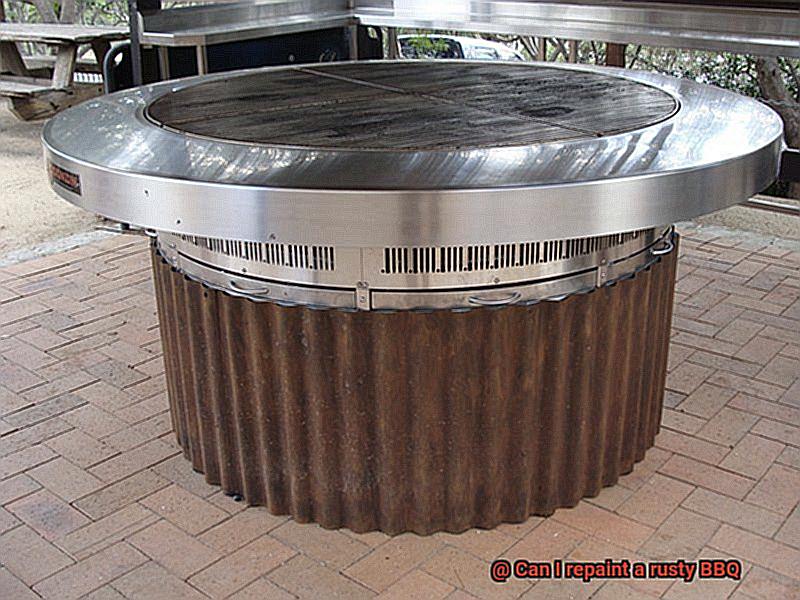
Rust not only looks unsightly but can also be a potential health hazard, contaminating food and causing illnesses. But before you toss out your beloved grill, know that repainting a rusty BBQ is indeed possible. With some preparation and the right materials, you can have your grill looking brand new again in no time.
The first step in repainting a rusty BBQ is crucial – cleaning it thoroughly. Use a wire brush or sandpaper to remove any loose rust, then wipe down the surface with a degreaser to get rid of any built-up grease or dirt. Once the surface is clean and dry, it’s ready for painting.
But before you start applying paint, it’s essential to choose the right kind of paint. High-temperature paint is recommended as it can withstand the heat of the grill. You’ll also want to select a paint that is specifically designed for metal surfaces and has rust-inhibiting properties. Applying thin, even coats of paint with a brush or spray can is key to achieving a smooth finish.
Patience is key when it comes to repainting a rusty BBQ. Each coat of paint must dry completely before applying another, which can take anywhere from 24 to 48 hours depending on the type of paint and temperature and humidity levels. It may also be necessary to apply several coats of paint to achieve the desired finish.
Preparing the BBQ for Repainting
Before you break out the paintbrushes, it’s crucial to prepare the surface properly to ensure the new paint adheres well and lasts for a long time. Here are some essential steps to follow when preparing your BBQ for repainting.
Cleaning the Surface
The first and most crucial step is to clean the surface thoroughly. Use a wire brush or sandpaper to remove any rust and roughen up the surface slightly. Afterward, rinse the BBQ with water and let it dry completely. This will ensure that no dirt or grease is left on the surface that could prevent the paint from adhering well.
Inspecting for Cracks or Holes
Next, inspect your BBQ for any cracks or holes. These can be filled with a high-temperature epoxy putty or filler designed for metal surfaces. Make sure the putty is rated for temperatures up to at least 500°F, as it will be exposed to high heat during grilling.
Applying Rust Converter
Once any cracks are filled and dried, it’s time to apply a rust converter to any remaining rust spots. This product will chemically convert the rust into a stable compound that won’t continue to corrode. Follow the instructions on the converter carefully, as application methods can vary depending on the product.
Cleaning Again
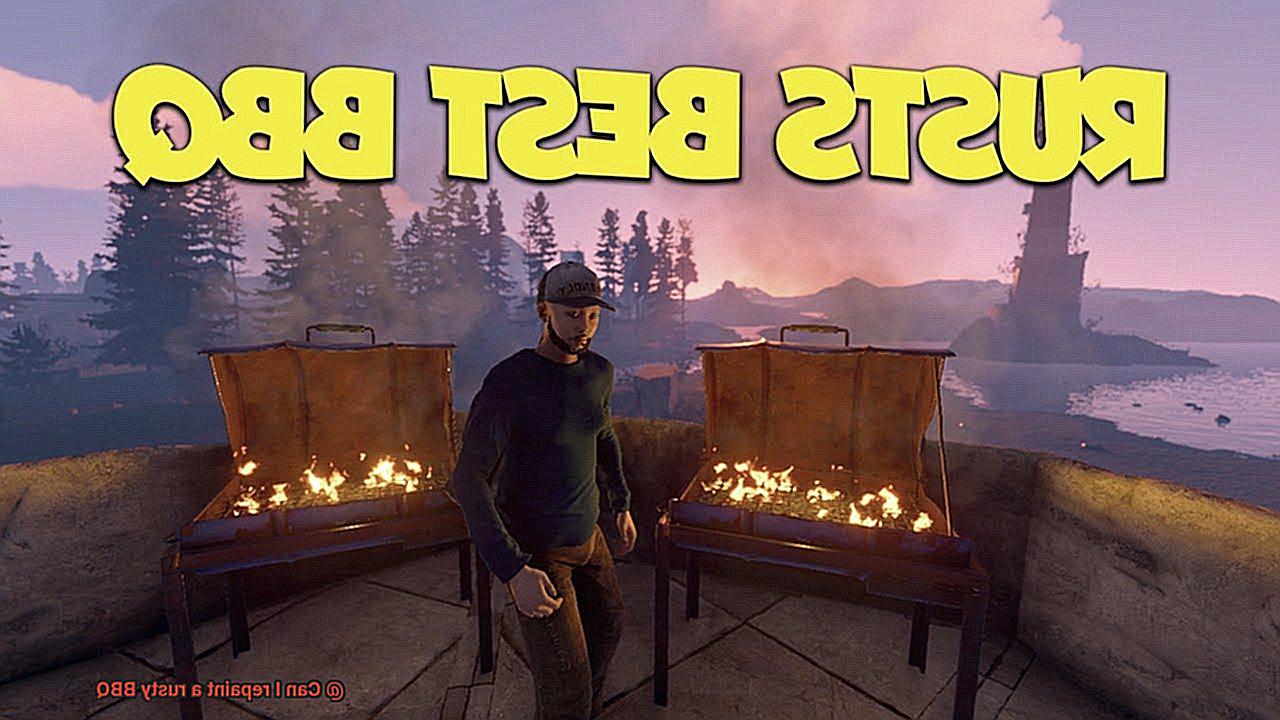
After applying the rust converter, clean the surface again with soap and water, then rinse and let it dry thoroughly once more. This will ensure that all remaining rust particles and residue are removed before painting.
Applying High-Temperature Paint
Finally, it’s time to apply a high-temperature paint designed for metal surfaces. Spray paint is often easiest to use, but a paintbrush can also work well for smaller areas or detailed work. When applying paint, make sure to work in a well-ventilated area and wear protective gear such as gloves and a respirator mask if necessary. Apply several thin coats of paint rather than one thick coat, allowing each coat to dry completely before adding another.
Choosing the Right Paint for Your BBQ
Here are some research notes to help you make an informed decision.
First and foremost, heat resistance is crucial. Your BBQ will be exposed to high temperatures when in use, so you need a paint that can handle the heat. High-temperature spray paint and ceramic-based paint are popular options as they can withstand temperatures of up to 1200 degrees Fahrenheit. These paints will not only protect your BBQ from high temperatures but also give it a sleek finish.
Durability is another critical factor to consider. Your BBQ will face harsh weather conditions like rain and sun, so choose a paint that can withstand these elements. Look for paints that are labeled as durable and weather-resistant, ensuring that they won’t easily chip or peel.
When it comes to color options, the possibilities are endless. You can opt for classic black or silver for a timeless look, or go bold with brighter colors like red or blue. The color choice entirely depends on your preferences and personal style.
It’s worth noting that some paints may require a primer before application. Always read the manufacturer’s instructions carefully before starting the painting process to ensure optimal results.
Applying Primer to the BBQ
Transform it into a sleek, durable masterpiece with a simple solution: applying primer. This crucial step in the repainting process provides a base coat for the topcoat to adhere to while also filling in any small imperfections and protecting against future rusting.
Before applying the primer, ensure that your BBQ is thoroughly cleaned. Remove any loose rust or debris with a wire brush or sandpaper, then wipe it clean with a cloth to eliminate any leftover dust or dirt.
When selecting your primer, choose a high-quality rust-inhibiting product that is compatible with the type of paint you plan to use for the topcoat. Zinc-based primers provide extra protection against rust and are highly recommended.
To apply the primer, follow the manufacturer’s instructions carefully. It’s best to use two thin coats, allowing sufficient drying time between each layer. Start at the top of the BBQ and work your way down, using even strokes.
After applying the primer, inspect the surface for any missed spots or areas where the primer may have pooled. Touch up these areas before proceeding with the topcoat.
Painting the BBQ in Even Coats
Restore its appearance and prolong its lifespan by giving it a fresh coat of paint. However, don’t just slap on any old paint and call it a day. Follow these essential steps to ensure your BBQ looks stunning and lasts for years to come.
Firstly, cleaning your BBQ thoroughly is crucial. Use a wire brush or sandpaper to remove any rust or debris from the surface before starting to paint. This will ensure that your new paint adheres smoothly and evenly, without any bumps or lumps.
Secondly, choose high-temperature paint designed for grills and other heat-resistant surfaces. This type of paint can withstand temperatures of up to 1200 degrees Fahrenheit without flaking or peeling, making it perfect for your BBQ. Choose a color that complements your outdoor decor or go bold with something bright and fun.
Next, apply even coats of paint for a smooth, consistent finish. Using a spray can or paintbrush is a matter of personal preference, but make sure you apply two to three thin coats instead of one thick coat. This will help avoid drips and ensure proper coverage.
Also, avoid painting in humid or windy conditions as this can ruin all your hard work. Find a dry, well-ventilated area with minimal wind to achieve an even finish. Don’t rush the process – let each coat of paint dry completely before applying the next one to avoid smudging or unevenness.
Curing and Sealing the Paint
Transforming a rusty BBQ into a stunning centerpiece of your backyard is no easy feat. But, with a fresh coat of high-temperature paint, you’ve done just that. Congratulations. However, don’t forget the crucial step of properly curing and sealing the paint. As an expert in this field, let me guide you through the process step-by-step.
First things first, ensure your BBQ is completely dry before applying any paint. This means leaving it in a warm, dry place for a few days after cleaning it. Once dry, apply a high-quality primer to the surface before painting. This will help the paint adhere better and provide an extra layer of protection against rust.
Now it’s time to paint. Use a high-quality, heat-resistant paint that is specifically designed for use on metal surfaces. Apply multiple coats if necessary to achieve a smooth and even finish. But don’t stop there – curing the paint is just as important as applying it.
Curing the paint involves allowing it to dry and harden for several days or even weeks, depending on the type of paint being used. It’s crucial to follow the manufacturer’s instructions for curing the paint in order to ensure that it sets properly and provides maximum protection against rust. Be patient – this step is vital to the longevity of your BBQ’s new look.
Finally, seal the paint with a clear coat. This will provide an extra layer of protection against scratches and other types of damage, as well as help keep the paint looking fresh and new for longer. Think of it as putting on a top coat of nail polish – it locks everything in and adds extra shine.
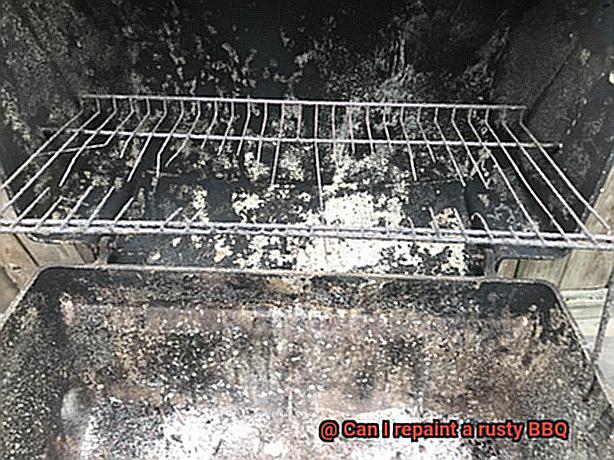
Benefits of Repainting a Rusty BBQ
Repainting your grill can make it look brand new and extend its lifespan, providing you with several benefits.
First and foremost, repainting your BBQ will protect it from further rust and corrosion. Rust is a common problem for outdoor grills, especially if they are left exposed to the elements. But by sealing the metal with a fresh coat of paint, you’ll prevent moisture from getting in and weakening the metal. This means you can cook on your grill worry-free, without any concerns about rust contaminating your food.
Not only will repainting improve the performance of your grill, but it will also enhance its appearance. A rusty BBQ can be unsightly and detract from the beauty of your outdoor living space. But with a fresh coat of high-temperature paint, you can customize your grill to match your home décor or personal style. You’ll be proud to show off your shiny new BBQ to all your friends and family.
Maintaining the value of your grill is important if you ever decide to sell it in the future. By repainting it, you’re showing potential buyers that you’ve taken good care of it and that it’s still in great condition. This means you’ll be able to sell it for more money than you would have if you let it continue to rust away.
Lastly, repainting your rusty BBQ is an affordable way to give it a makeover without having to replace it entirely. Buying a new grill can be expensive, especially if you want one with all the latest features. But with just a can of paint and some elbow grease, you can transform your old, rusty grill into a beautiful and functional piece of outdoor equipment that you’ll enjoy for years to come.
T0PKoJcstLM” >
Conclusion
To sum up, reviving your rusty BBQ is an easy and budget-friendly way to prolong its lifespan and restore its charm. Rust can develop due to moisture, air exposure, heat, and the type of metal used in your grill. Nevertheless, with the right cleaning and preparation techniques, you can give your BBQ a fresh coat of high-temperature paint that’s specifically designed for metal surfaces. It’s imperative to select a durable, weather-resistant, and rust-inhibiting paint to ensure long-lasting protection.
Before painting your BBQ, you need to clean it thoroughly and inspect it for any cracks or holes. Applying rust converter and high-quality primer are also crucial steps in preparing the surface for painting. When painting your grill, make sure to apply even coats of paint for a smooth finish and let each coat dry completely before adding another. Curing and sealing the paint will further safeguard against rust and scratches.
Repainting your rusty BBQ comes with numerous benefits such as shielding it from future rusting and corrosion, improving its aesthetic appeal, preserving its value if you ever plan on selling it later on, and being a cost-effective way to give it a facelift without having to replace it entirely.

